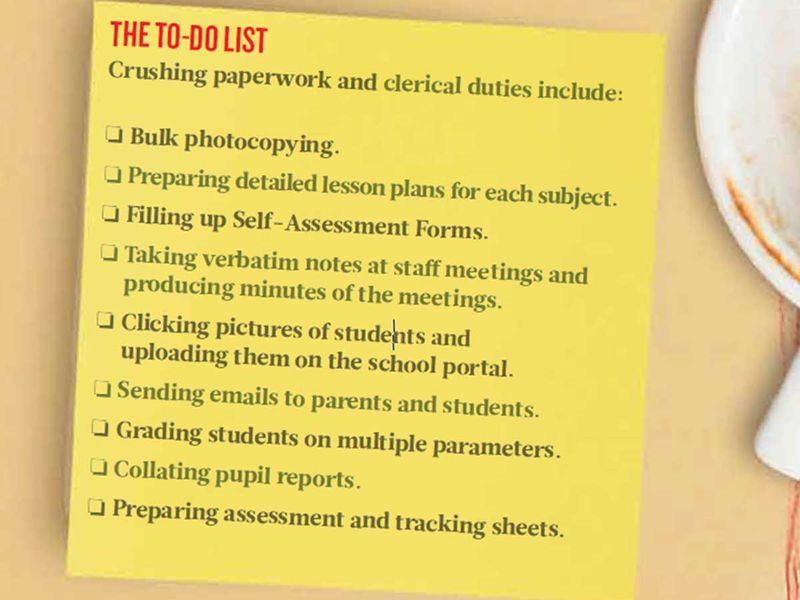
Most of us know the satisfaction of a crossed-off to-do list item (and the nagging weight of a task unchecked). Whether they’re in a homework planner at school or on a sticky note on a desk at work, to-do lists are an easy way to lay out what has to be done.
But how do you avoid the chaos of dozens of little pieces of paper or a digital document that requires endless scrolling? We spoke with experts to find out how to make to-do lists that will help you efficiently accomplish tasks so you have time for activities you really want to do.
Stick to a simple method
The purpose of creating lists and organising systems shouldn’t be to create extra work, said Julie Morgenstern, a New York productivity consultant and author of “Organising from the Inside Out.” A colour-coordinated list with stickers and extras could work well for one person but might be distracting to someone else.
Someone may find comfort in an Excel spreadsheet, but it may cause stress to others. The method doesn’t matter as much as its usefulness. “You want to use a list as an asset, not as a way to delay doing what’s on the list,” said Stephanie Shalofsky, founder of the Organising Zone in New York.
In terms of where you do the organising, Morgenstern said it’s totally up to you. Test out different approaches, but stick with something you’ll use consistently. For people who are more tactile and visual, she said, a paper planner or notepad is a good place to start.
Digital methods might make more sense for people who need remote access to their lists, or who are planning for others who need access, Morgenstern said. Any digital system needs to integrate with your calendar.

Categorise and prioritise
If you’re just starting to get serious about your organisation game, Ellen Faye, a strategic planning and productivity coach, recommends beginning with a simple methodology that you can easily add to as you get busier. Don’t bother putting down tasks that are automated, such as brushing your teeth.
Some people say to write everything down, but not everything needs to go on the list. You can start by writing everything down, she said, and then winnow. In her practice and in her personal life, she separates what she wants to accomplish into four categories based on the task’s urgency and value:
1. Critical: Whatever needs to be done right away — for example, if rent is due today.
2. Hot: Tasks that have to be done in the next two or three days.
3. Sooner: Everything else needs to be done soon but can wait until after the previous two categories are done.
4. Later: Something you need to finish that doesn’t fit into the above categories.
When you’re laying out your tasks, think realistically about how long each one will take and assign a time to it. (For example: Filling out a job application could take five minutes, but it’ll take considerably longer if you have yet to write a cover letter you have to attach.)
The biggest mistake people make is not asking how long things take. If you start asking how long and get good at answering that question, then you’re in a position to evaluate if that thing is worth your time. This isn’t to say that time-consuming tasks aren’t worth completing — in some cases, they might be mandatory — but you’re more likely to get them done if you know what you’re dealing with. Breaking the list into smaller steps gives you a clearer picture of what needs to be done.
Tasks vs goals
It’s fine to put “learn cello” on a list, but without an action, that directive isn’t helpful, said Liz Sumner, an American life coach in Italy. Instead of jamming numerous vague goals into your day-to-day, Sumner recommends creating some time in your schedule to think about what you want in the longer term, whether that’s a week, a month or a year. Breaking down larger goals into manageable pieces can be done by assigning small tasks.
To make “learn cello” into something actionable, start with something such as “research cello rentals” or “order cello music book.” Framing tasks this way helps you allocate time and energy and can also be helpful when evaluating what is worth your time.
It’s the system — not you
The measure of whether an organising system works is whether you’re accomplishing the tasks you need to do and finding time to do activities that make you happy.
The goal, Sumner said, is to achieve a balance across the different areas of your life. A key reminder Sumner gives her clients is to try to approach tasks with enthusiasm and patience and to remember that not every method works for everyone. Instead of focusing on what you didn’t do, try to celebrate the tasks you did complete — and think about how those will help in the short and long term.
Drumming up enthusiasm to accomplish even mundane tasks is half the battle, she said. Tying consequences and rewards to tasks helps them get done. If items are left undone, and your list is falling by the wayside, set aside time to check in with yourself to evaluate what’s not working.
Is it too complex, or is it so simple that you’re forgetting basic tasks? Perhaps you don’t like the system or the medium you’re using. A refresh could get you back on track.
Different methods work for different periods of life, too. A to-do list is a snapshot of a moment in time. It’s important for people to understand that over time, lists will change and the types of items might not be the same. Use your list as a guide, don’t feel beholden to it, and leave room for fun and relaxation.
— Washington Post
Helen Carefoot is a columnist and features writer.









